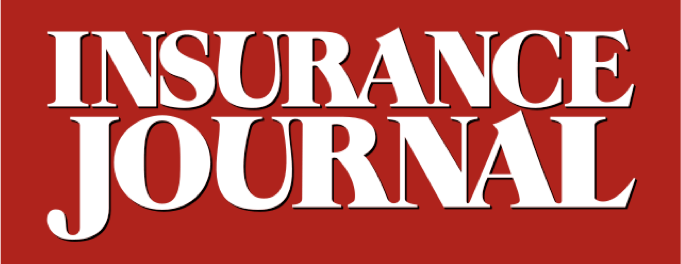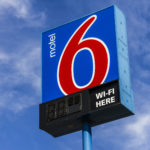The liability litigation environment in the U.S. continues to be challenging, driven by increases in nuclear and thermonuclear verdicts, rising attorney representation rates and evolving litigation strategies.
Sedgwick’s new Liability Litigation Observation and Trends report offers a view into these developments.
The most striking trend in liability litigation is the dramatic increase in both size and number of nuclear verdicts, defined as jury awards exceeding $10 million, and their more extreme counterparts, thermonuclear verdicts (those that exceed $100 million). A Marathon Strategies report recently found that:
- Nuclear verdicts rose by 52% in 2024, continuing a multi-year upward trajectory.
- Thermonuclear verdicts increased 81.5% between 2023 and 2024.
- The median verdict amount increased by 15.9%, pushing the average to $51 million.
- Top states for nuclear verdicts in 2024 included Texas (23), California (17), and Pennsylvania (12), with Florida, New York, and Delaware tied at seven each.
This escalation is not just a matter of outlier cases. A report from the Institute for Legal Reform revealed the average cost of defending personal injury lawsuits increased at an annual rate of 7.1% from 2016 to 2022, while a survey by Thompson Reuters indicated defense firm rates rose 6% in 2023 and 6.5% through mid-2024. These figures reflect a dual threat: rising settlement values and mounting defense costs.
The shift in venue dynamics is also notable. While 90% of nuclear verdicts were once occurring in state courts, that figure dropped to 62% in 2024, suggesting that federal court removal strategies may no longer offer the same protective buffer from disproportionate verdicts.
The beginning point could be attributed to increased attorney involvement in liability claims. Sedgwick’s data shows that:
- 64% of general liability (GL) and 75% of auto liability (AU) that will at some point be litigated have legal representation within two weeks of claim assignment.
- A 2024 Lexis Nexis study found that 85% of auto accident victims were contacted by at least one attorney, and 60% by two or more.
- The 2024 Lexis Nexis study further stated that the top reasons claimants cited for hiring attorneys were: Professional support (35%); protection and fairness (20%); financial outcome (16%).
This aggressive attorney outreach is supported by multi-channel marketing strategies, including roadside billboards, social media ads and live lead transfers. Some personal injury lead generation partners boast that responding to a lead within five minutes increases conversion rates 21 times, while a one-minute response can boost conversions by 391%.
The implication for insurers and third-party administrators is clear: the opportunity to establish relationships with injured parties is shrinking. Claims professionals must now focus on empathetic communication, transparent processes and technology-driven intake systems to counteract early attorney involvement.
While overall litigation rates for GL and AU claims remain relatively low, the severity and frequency of high-dollar outcomes are increasing. This is compounded by legal system abuses which are characterized by:
- Aggressive attorney advertising
- Jury anchoring (suggesting high damage amounts)
- Phantom damages (billed vs. paid medical expenses)
- Third-party litigation funding
States like Florida and Georgia have begun addressing these issues through tort reform, but many jurisdictions still lack comprehensive changes. The result is a litigation environment where anti-corporate sentiment, particularly against insurers, is growing. And this is especially true in the youngest demographic of voters. A recent Emerson College poll found that 41% of voters aged 18 to 29 viewed the actions of the alleged killer of United Healthcare’s CEO as “somewhat or completely acceptable,” compared with 68% of all voters who found them unacceptable.
To better understand litigation outcomes, Sedgwick analyzed 10 years of closed litigated claims across federal and state courts. The findings are instructive:
- Only 1.8% of cases went to verdict; the remaining 98.2% settled voluntarily.
- Of the cases that went to trial: 75.4% had favorable defense outcomes (defined as a verdict at or below the last defense offer); 21.7% could be considered a plaintiff win (defined as exceeding the last defense offer); 2.9% were appealed.
The liability litigation environment is no longer manageable through traditional methods. The rise in nuclear verdicts, the speed of attorney engagement, and the increasing cost of litigation demand a new approach of being grounded in data, analytics, and early intervention.
The findings make it clear: organizations that invest in predictive modeling, legal spend analytics, and jurisdictional intelligence will be best positioned to navigate the current environment of liability litigation. As the plaintiffs’ bar continues to innovate and invest, the defense must do the same or continued to lose ground.
Was this article valuable?
Here are more articles you may enjoy.



 Judge Green Lights New York’s Driver’s License Law, Rejecting Trump Challenge
Judge Green Lights New York’s Driver’s License Law, Rejecting Trump Challenge  US P/C Posts $35B YTD Underwriting Gain; By-Line Premium Growth Revealed
US P/C Posts $35B YTD Underwriting Gain; By-Line Premium Growth Revealed  Senators Launch Probe Into Demotech’s Ratings in Florida
Senators Launch Probe Into Demotech’s Ratings in Florida  Longtime Motel 6 Spokesman Tom Bodett Settles Lawsuit Against Chain
Longtime Motel 6 Spokesman Tom Bodett Settles Lawsuit Against Chain 


